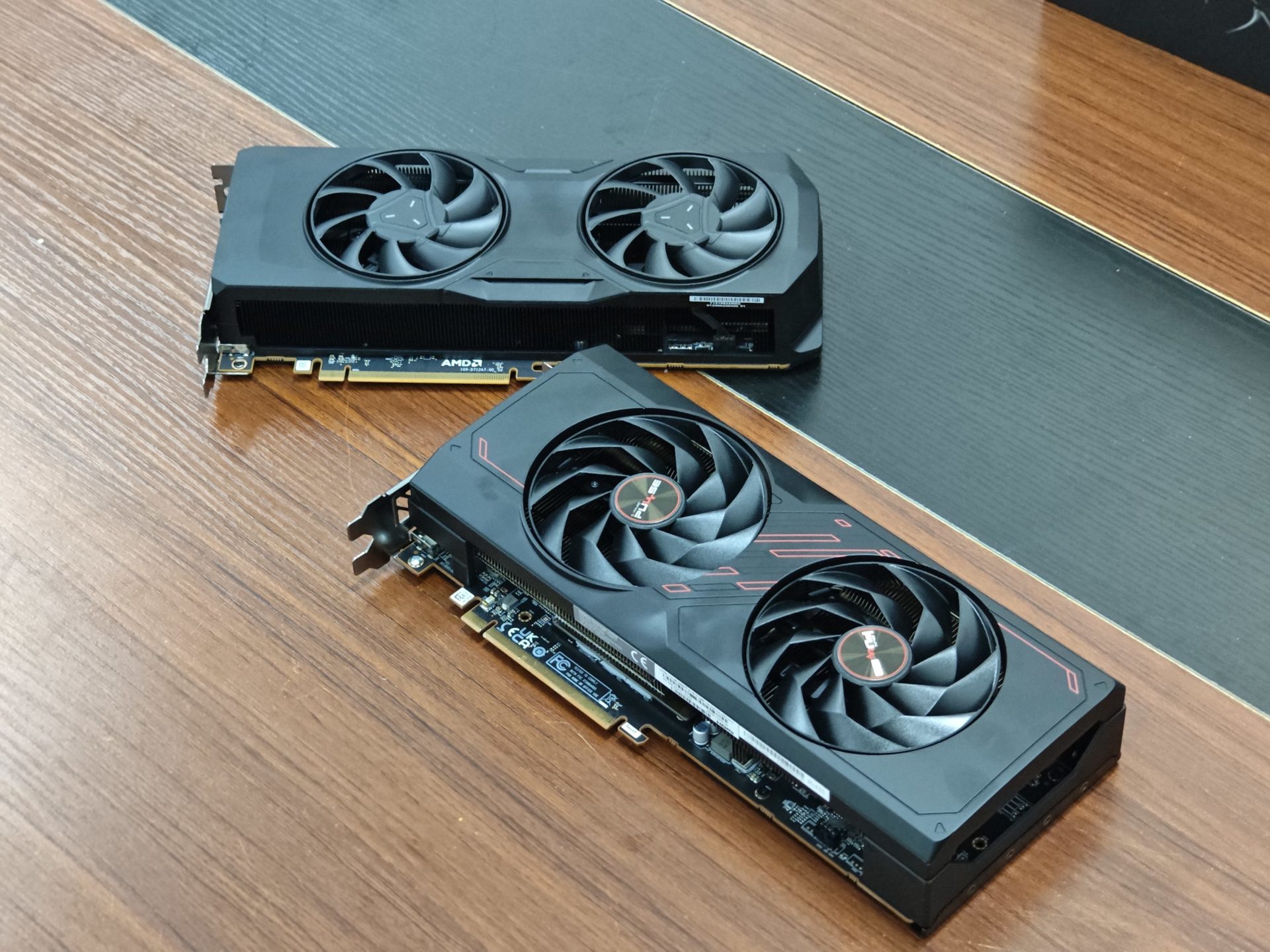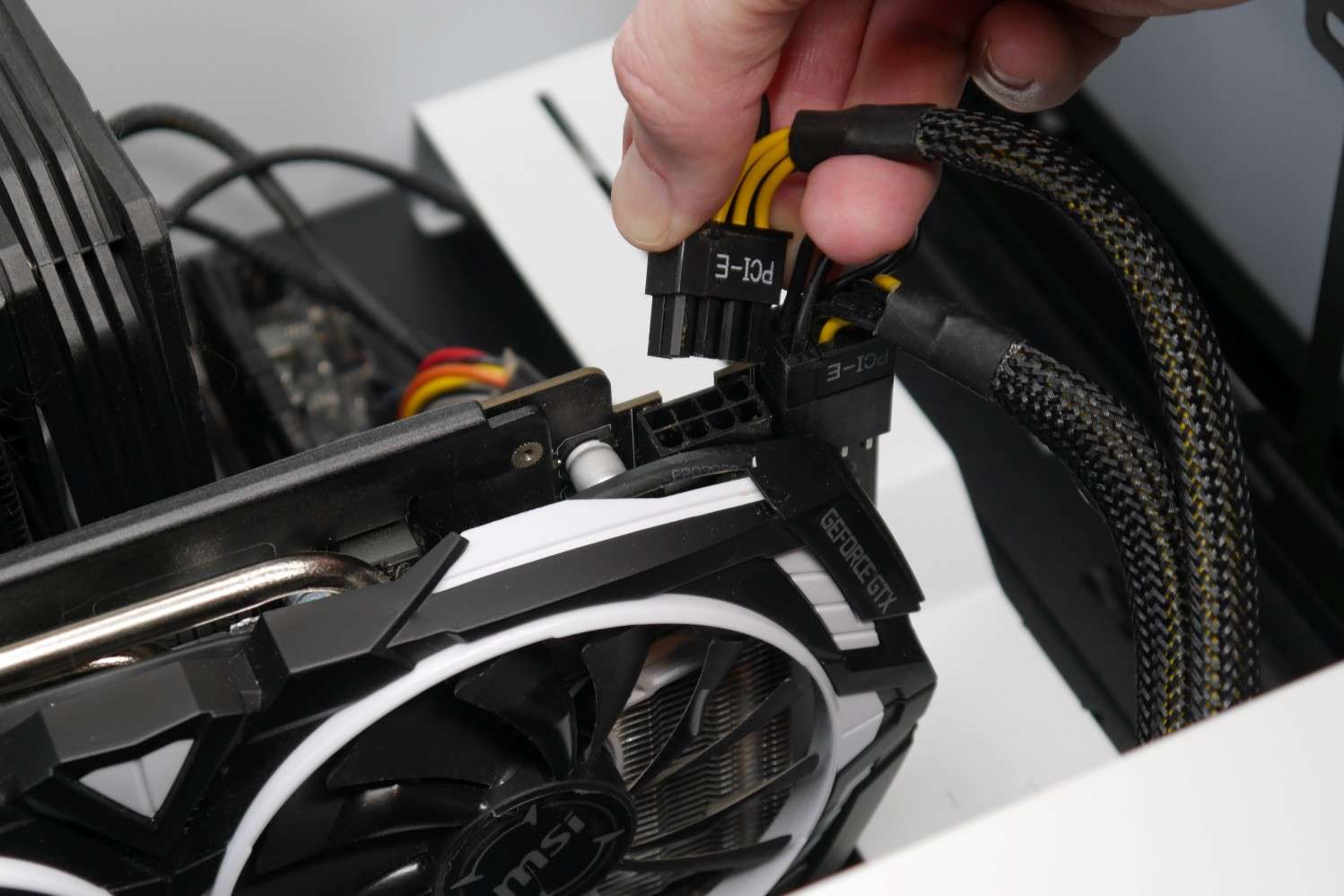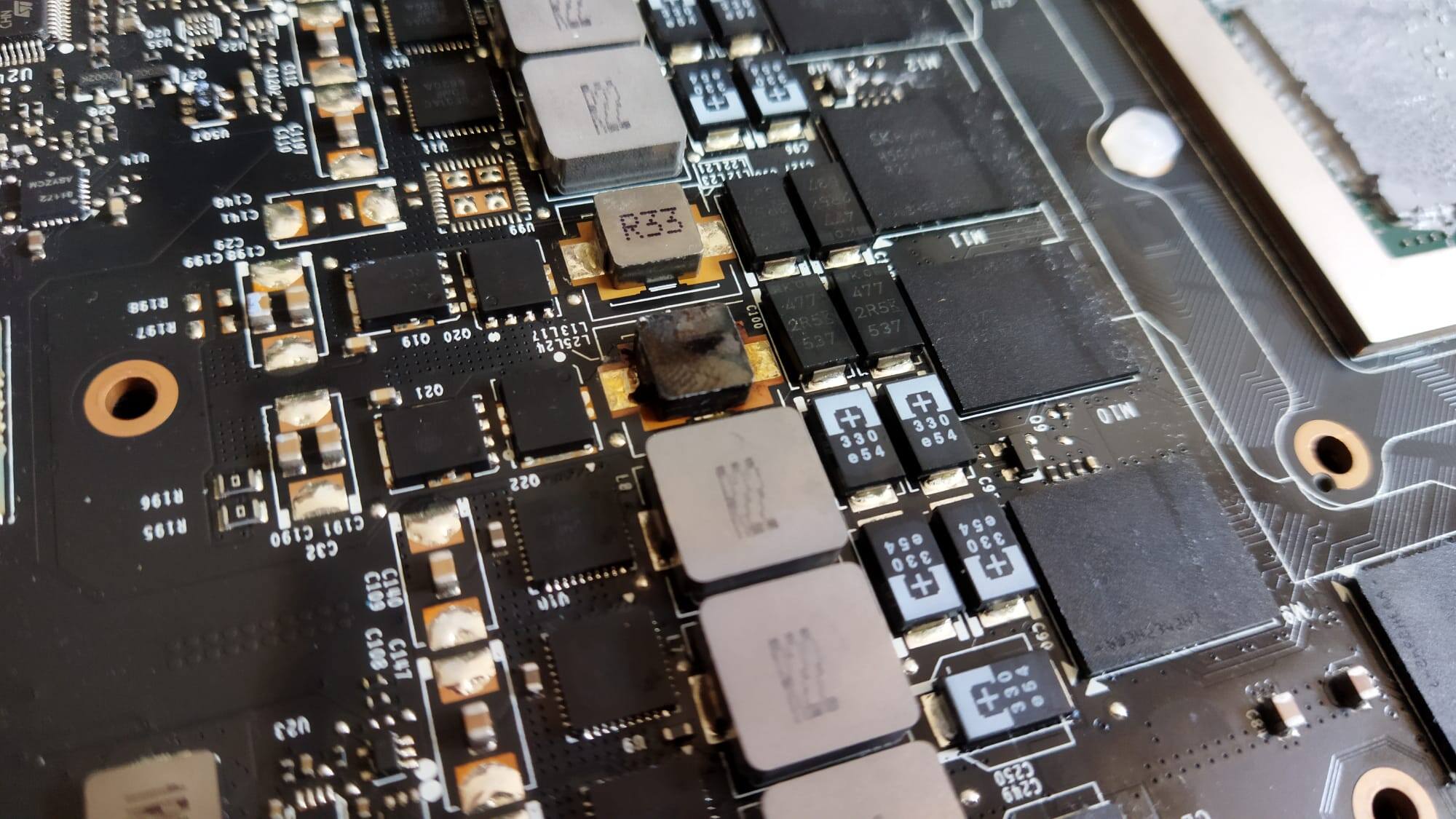Introduction
Gaming has become a popular form of entertainment, allowing individuals to immerse themselves in virtual worlds and experience thrilling adventures. However, not all gaming experiences are created equal, and one crucial factor that can greatly impact game performance is the graphics card. Whether you’re a casual gamer or a hardcore enthusiast, it’s important to know if your graphics card is up to the task of running the latest games smoothly.
A graphics card, also known as a GPU (Graphics Processing Unit), is responsible for rendering images, animations, and videos on your computer screen. It is a vital component for gaming as it handles complex calculations and renders high-resolution textures and realistic graphics. Without a sufficient graphics card, you may experience lag, stuttering, or poor visual quality in your games.
Knowing whether your graphics card is good enough for a particular game involves considering its specifications, such as its VRAM (Video RAM) capacity, core clock speed, and memory bandwidth. Additionally, you need to check the minimum system requirements specified by the game developers to ensure compatibility.
In this article, we will guide you through the process of determining if your graphics card is good enough for a game. We will discuss how to understand graphics card specifications, check system requirements, compare specifications with game requirements, consider performance benchmarks, and explore other factors that may impact gaming performance.
It’s essential to note that while having a powerful graphics card is crucial for smooth gameplay, it’s not the only factor that influences overall performance. Other components like the CPU (Central Processing Unit), RAM (Random Access Memory), and storage speed also play a significant role. However, for the purpose of this article, we will focus primarily on the graphics card.
Whether you’re considering purchasing a new graphics card or wondering if your existing one is sufficient for a specific game, this article will provide you with the knowledge and techniques to make an informed decision. Let’s dive in and unravel the mysteries of graphics card compatibility!
Understanding Graphics Cards
Before we delve into determining whether your graphics card is good enough for a game, let’s first gain a better understanding of what graphics cards are and how they work.
A graphics card is a specialized piece of hardware that is responsible for rendering images, animations, and videos on your computer screen. It consists of a GPU (Graphics Processing Unit), which is the primary component that performs all the necessary computations to create and display graphics.
The GPU works in tandem with your computer’s CPU (Central Processing Unit) to process and manipulate data. However, while the CPU handles general computing tasks, the GPU is specifically designed to handle complex graphics calculations and rendering.
Graphics cards come in different models and configurations, each with its own set of specifications. These specifications include factors such as the VRAM (Video Random Access Memory) capacity, core clock speed, memory bandwidth, and shader units.
The VRAM is the dedicated memory on the graphics card that stores and manages the data needed for rendering graphics. The capacity of the VRAM determines how much data the graphics card can handle at any given time. Games with higher resolutions and more advanced graphics require greater VRAM capacity to ensure smooth performance.
The core clock speed refers to the speed at which the GPU operates. A higher core clock speed allows for faster computations and better performance in graphics-intensive tasks.
Memory bandwidth is another crucial specification to consider. It refers to the speed at which the graphics card can transfer data to and from the VRAM. Higher memory bandwidth enables faster data transfer and contributes to smoother gaming experiences.
Shader units, also known as CUDA or Stream Processors, are responsible for running complex calculations and applying various effects to the rendered graphics. The higher the number of shader units, the more efficiently the graphics card can handle complex visual effects.
Understanding these specifications is vital when determining whether a graphics card is good enough for a particular game. By analyzing these factors, you can assess the capabilities and limitations of your graphics card and make informed decisions about game compatibility.
In the next section, we’ll discuss how to check the minimum system requirements specified by game developers and how to compare them with your graphics card’s specifications to ensure compatibility.
Minimum System Requirements
Game developers often provide minimum system requirements that outline the hardware specifications needed to run their games optimally. These requirements include not only the graphics card specifications but also the CPU, RAM, and storage requirements. By checking the minimum system requirements, you can determine if your computer meets the necessary specifications to run the game smoothly.
To find the minimum system requirements for a specific game, you can visit the official website of the game developer or check the game’s packaging. The requirements are usually listed under a section titled “System Requirements” or “Minimum Specifications.”
When examining the minimum system requirements, you’ll typically find information about the required operating system version, the minimum amount of RAM, the recommended CPU, and, most importantly, the graphics card specifications.
Pay close attention to the specific details of the graphics card requirements. Look for information about VRAM capacity, shader model versions, and any other graphics-related specifications mentioned. This information will give you a clear picture of the minimum graphics card requirements necessary for the game.
It is crucial to note that meeting only the minimum system requirements does not guarantee flawless gameplay. While you may be able to run the game, it may not be at the optimal settings or frame rate. Thus, it is recommended to aim for hardware that exceeds the minimum requirements to ensure a better gaming experience.
Now that you are familiar with the concept of minimum system requirements, let’s move on to the next section, where we will dive into checking your graphics card specifications and comparing them with the game requirements to determine compatibility.
Checking Graphics Card Specifications
Checking your graphics card specifications is a crucial step in determining if it is good enough to run a specific game. Fortunately, obtaining this information is relatively easy and can be done using various methods.
One of the most straightforward ways to check your graphics card specifications is through your computer’s operating system. Both Windows and macOS provide built-in tools that allow you to view detailed information about your graphics card.
In Windows, you can access the graphics card information by following these steps:
- Right-click on the desktop and select “Display settings.”
- Scroll down and click on “Advanced display settings.”
- Click on “Display adapter properties.”
- A window will appear showing your graphics card model, VRAM capacity, and other specifications.
In macOS, you can access the graphics card information by following these steps:
- Click on the Apple menu in the top-left corner of the screen.
- Select “About This Mac.”
- Click on “System Report” or “System Information.”
- Select “Graphics/Displays.”
- Your graphics card model, VRAM capacity, and other specifications will be listed in the window.
Alternatively, you can use third-party software to retrieve your graphics card specifications. Popular tools like GPU-Z and Speccy provide detailed information about your graphics card, including VRAM capacity, core clock speed, and other relevant specifications.
Once you have obtained the information about your graphics card, make note of the VRAM capacity, shader model, and other specifications. These details will be useful when comparing your graphics card with the game requirements in the next section.
Now that you know how to check your graphics card specifications, let’s move on to the next section, where we will discuss how to compare these specifications with the minimum requirements of a game to determine compatibility.
Comparing Specifications with Game Requirements
After obtaining the specifications of your graphics card, it’s time to compare them with the requirements specified by the game developers. This step will help you determine if your graphics card is good enough to run the game smoothly.
Start by referring to the minimum system requirements provided by the game developers, as mentioned earlier in this article. Look for the graphics card specifications mentioned, such as the VRAM capacity, shader model, and any other specific requirements.
Compare these requirements with the specifications of your graphics card. If your graphics card meets or exceeds the minimum requirements, you can feel confident that it is suitable for running the game. However, keep in mind that meeting the minimum requirements does not guarantee optimal performance, especially for more graphically demanding games.
Consider these factors when comparing the specifications:
- VRAM Capacity: Ensure that your graphics card has enough VRAM to handle the game’s graphics. If the game requires 4GB of VRAM, for example, and your graphics card has 6GB, you should be in good shape.
- Shader Model: Some games may specify a minimum shader model version. Check if your graphics card meets or exceeds the required shader model version.
- Other Specifications: Pay attention to any other specific requirements listed, such as DirectX version or OpenGL compatibility. Make sure your graphics card supports these requirements.
It’s worth noting that while it’s essential to meet the minimum requirements, you may still experience performance issues if your graphics card is only at the minimum level. For a smoother and more enjoyable gaming experience, it’s advisable to aim for a graphics card that exceeds the minimum requirements or falls within the recommended specifications provided by the game developers.
In the next section, we will explore performance benchmarks and how they can help you determine the actual performance of your graphics card in different games.
Performance Benchmarks
While comparing your graphics card specifications with the game requirements provides a good starting point, it’s also helpful to look at performance benchmarks to gain a more accurate understanding of how well your graphics card will perform in real-world scenarios.
Performance benchmarks are tests conducted on various graphics cards to measure their performance in specific games or software. These benchmarks provide insights into factors like frame rates, graphics settings, and overall smoothness of gameplay.
There are several reputable websites and software tools that publish performance benchmark results for different games. These benchmarks allow you to compare your graphics card’s performance with other models or generations, helping you determine how well it stacks up against the competition.
When examining performance benchmarks, focus on games that are similar to the one you’re interested in playing. Look for benchmarks that test performance at the desired resolution and graphics settings you intend to play at. This will give you a better understanding of what to expect from your graphics card in that specific game.
Keep in mind that performance benchmarks provide an indication of how a graphics card performs on average. Actual performance may vary depending on other factors like your computer’s CPU, RAM, and storage speed, as well as driver optimizations and updates.
If you find that your graphics card falls short in performance benchmarks or is unable to achieve the desired frame rates at your desired settings, it may be an indication that an upgrade is necessary to enjoy the game at its best.
Now that you understand the importance of performance benchmarks, let’s move on to the next section where we will discuss other factors that can impact gaming performance.
Consider Other Factors
While the capabilities of your graphics card play a significant role in determining whether it is suitable for a game, there are other important factors to consider that can impact overall gaming performance.
CPU: The CPU, or Central Processing Unit, works alongside the graphics card to handle various calculations and tasks in games. A powerful graphics card paired with a weak CPU may result in a bottleneck, limiting the overall performance. It’s important to ensure that your CPU is capable of keeping up with the demands of the game.
RAM: Random Access Memory (RAM) is responsible for temporarily storing data that the computer needs to access quickly. Sufficient RAM is essential for smooth gameplay, as it allows for quick loading of game assets and smooth transitions between different game elements. Make sure you have enough RAM to support your graphics card and the game’s requirements.
Storage Speed: The speed at which your storage device (HDD or SSD) can read and write data can impact gameplay, especially during loading screens and asset streaming. Using an SSD instead of an HDD can significantly enhance load times and reduce in-game stutters caused by slow data access.
Driver Updates: Graphics card manufacturers regularly release driver updates that optimize performance and fix compatibility issues with new games. Keeping your drivers up to date can improve your graphics card’s performance and compatibility with the latest titles.
Power Supply: A powerful graphics card requires an adequate power supply to operate effectively. Ensure that your power supply can provide enough power to support your graphics card and other components in your system. Insufficient power can lead to stability issues and overall system performance degradation.
Cooling and Ventilation: Graphics cards can generate a significant amount of heat, especially during intense gaming sessions. Proper cooling and ventilation are crucial to prevent overheating and performance throttling. Ensure that your system’s cooling solution is sufficient to keep your graphics card running at optimal temperatures.
Consider all of these factors alongside your graphics card specifications to determine if your system is well-equipped to handle a specific game. Taking a holistic approach and optimizing all components of your system can result in a smoother and more enjoyable gaming experience.
Now that we have explored the various factors that can impact gaming performance, let’s move on to the final section, where we will discuss the possibility of upgrading your graphics card to enhance your gaming capabilities.
Upgrading Your Graphics Card
If you have determined that your current graphics card is not sufficient for the games you want to play, you may consider upgrading to a more powerful option. Upgrading your graphics card can significantly enhance your gaming experience and allow you to enjoy the latest games with higher graphics settings and smoother frame rates.
When upgrading your graphics card, there are a few key factors to keep in mind:
- Compatibility: Ensure that the new graphics card is compatible with your motherboard, power supply, and other components. Check the slot and power requirements of the graphics card and make sure your system can accommodate it.
- Budget: Set a budget for your upgrade and research various graphics card options within that budget. Consider the performance gains and value for money offered by different models.
- Future-proofing: If you want your graphics card to remain relevant for a longer period, consider investing in a higher-end model that offers more power and future-proof features. This can ensure that your system can handle upcoming games and visual advancements without needing another upgrade anytime soon.
- Research: Read reviews, benchmark comparisons, and user experiences to gather information about different graphics card models. Look for cards that offer the best performance within your budget and meet your specific requirements.
- Consider Other Components: Assess your CPU, RAM, and other system components to ensure they will complement and not limit the performance of your upgraded graphics card. Upgrading only the graphics card may not yield significant improvements if the rest of your system is outdated or underpowered.
Before purchasing a new graphics card, double-check the game requirements and ensure that the card you choose exceeds the recommended specifications for your desired settings and resolutions. This will help guarantee a smooth gaming experience without compromising on visual quality.
Once you have chosen a suitable graphics card, follow the installation instructions provided by the manufacturer. It is also advisable to uninstall the previous graphics card drivers and install the latest drivers for the new graphics card to optimize performance and compatibility.
Keep in mind that upgrading your graphics card may require additional considerations, such as power supply upgrades, cooling solutions, or even a new computer case to accommodate larger graphics cards. Make sure to account for these factors when planning your upgrade.
With the new graphics card in place, you can now enjoy improved graphics performance and better gaming experiences. However, remember that other factors such as CPU, RAM, and storage speed also impact gaming performance. Consider upgrading these components if necessary to fully optimize your system for gaming.
Now that we have explored the process of upgrading your graphics card, we can move on to the concluding section of this article.
Conclusion
Determining if your graphics card is good enough for a game is a critical consideration for any gamer. By understanding the specifications of your graphics card, checking game requirements, and considering other factors, you can make informed decisions about optimizing your gaming experience.
Start by understanding the basics of graphics cards and how they contribute to rendering realistic graphics in games. Familiarize yourself with the key specifications, such as VRAM capacity, core clock speed, and shader units.
Check the minimum system requirements provided by game developers to ensure compatibility. Compare these requirements with your graphics card’s specifications to determine if it meets the necessary criteria.
Consider other factors like CPU, RAM, storage speed, driver updates, power supply, and cooling to ensure optimal gaming performance. All these components work together to deliver a smooth and enjoyable gaming experience.
If your graphics card falls short in meeting the game requirements or desired performance, you may consider upgrading to a more powerful graphics card. Research different models, consider compatibility, budget, and future-proofing to find the best option for your needs.
Remember that while graphics cards play a crucial role in gaming, other factors like CPU, RAM, and storage speed also impact overall performance. Aim for a balanced system where all components work together seamlessly.
By following these steps and making informed decisions, you can ensure that your graphics card is good enough for the games you want to play, providing you with captivating visuals and seamless gameplay.

























